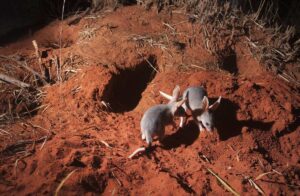The Australian Renewable Energy Agency may make another $100 million of grants available in a new round of funding for large scale solar projects in Australia following the overwhelming response to its latest program.
ARENA has made $100 million available and attracted 77 large scale project proposals across Australia, before narrowing that list down to 22 projects totalling some 767MW of capacity.
The $100 million it will make available is designed to be sufficient to get some 200MW of capacity under way. The Clean Energy Finance Corporation is making a further $250 million of finance available, which might increase the capacity and the number of projects being built.
Now, it appears, ARENA is already considering a further round of a similar scope.
The Coalition government, ironically, has yet to withdraw legislation seeking to fold up the operations of ARENA, but environment minister Greg Hunt flagged the likely second round in an interview on Thursday after officiating at the opening of the 102MW solar plant at Nyngan, and the 53MW solar plant in Broken Hill.
“We’ve got projects such as this, and then the new hundred million dollar round, and they (ARENA) have also been talking about a further equivalent round, simply because the uptake of demand is enormous,” Hunt said.
A spokesperson for ARENA confirmed that discussions had taken place, although it was too early to talk about the scope of the new funding round, or the timing.
The ARENA supported projects in Nyngan and Broken Hill had received some $164 million from the agency, and a further $67 million from the NSW government.
But it had established a supply chain for such projects in Australia, which was a critical component for reducing costs.
The next funding round is designed to exploit and further develop that supply chain – which includes several suppliers to the car industry now looking for new industries – and a further funding round could cement those gains.
The Coalition favours large scale solar over large scale wind, at least to the pacify the wind farm critics in the Far Right rump of its own parties.
The government is also keen to be seen to be “doing something” considering the standstill it has created in the large scale renewable energy target.
Despite the overwhelming number of projects being proposed, few if any can get finance because of the lingering uncertainty in the market, and because utilities are not signing power purchase agreement.
Hunt has been meeting various parties to try and find a way through the blockage. A report released this week by Green Energy Markets suggested that 4,400MW of new capacity needed to be committed this year if a shortfall in the target is to be avoided.
If a shortfall does emerge, then those obligated parties (electricity retailers) who fail to meet their quota, will be forced to pay a penalty price. But this will simply be passed on to consumers, with the government – rather than project developers – receiving the money.
Under one scenario canvassed by GEM, up to $2 billion in penalty payments may be made. It noted only 8.5MW of new capacity had been committed in the last four months, a tiny fraction of what is required in the coming year.
That, in turn, will likely trigger a circular blame game between utilities, the government, and the renewable energy industry.
Labor said the Coalition’s “hyprocisy” on renewables had reached new levels as it celebrated the opening of the Nyngan and Broken Hill plants, which is being funded by an agency it is trying to dismantle. It pointed to the sharp slump in large scale renewable investment since the election of Tony Abbott in late 2013.
Asked about the Coalition’s support in the radio interview, Hunt said:
“My view has always been deeply supportive of renewables – I’ve maintained that through all different governments and all different regimes.
It’s been about finding a way to make it work in a cost efficient mechanism – and this plant is fabulous.
“It’s already led to many other proposals in the next big round of Federal Government solar funding, and they’re coming in at a lower cost precisely because of Nyngan and Broken Hill.”
Meanwhile, Federal Labor MP Alannah Mactiernan lamented the “complete and utter inaction” on the part of the Barnett Government – a Coalition government – to support large-scale renewable energy investment in WA.
She said while Ergon Energy in Queensland was looking to contract 150MW of large scale renewables in Queensland, the WA government owned Synergy had called for tenders for large scale generation certificates to meet its RET liabilities, but will allow the certificates to be generated anywhere in Australia.
Only one WA project made the ARENA shortlist. Most came from Queensland and NSW.
“Labor has been warning for years that, with Colin Barnett dismantling the Office of Energy and winding back renewables programs, that WA would end up funding investment in the eastern states and missing out on opportunities to develop WA’s industry and create the jobs of the 21st century.”











